Buckwheat Oats Pancakes
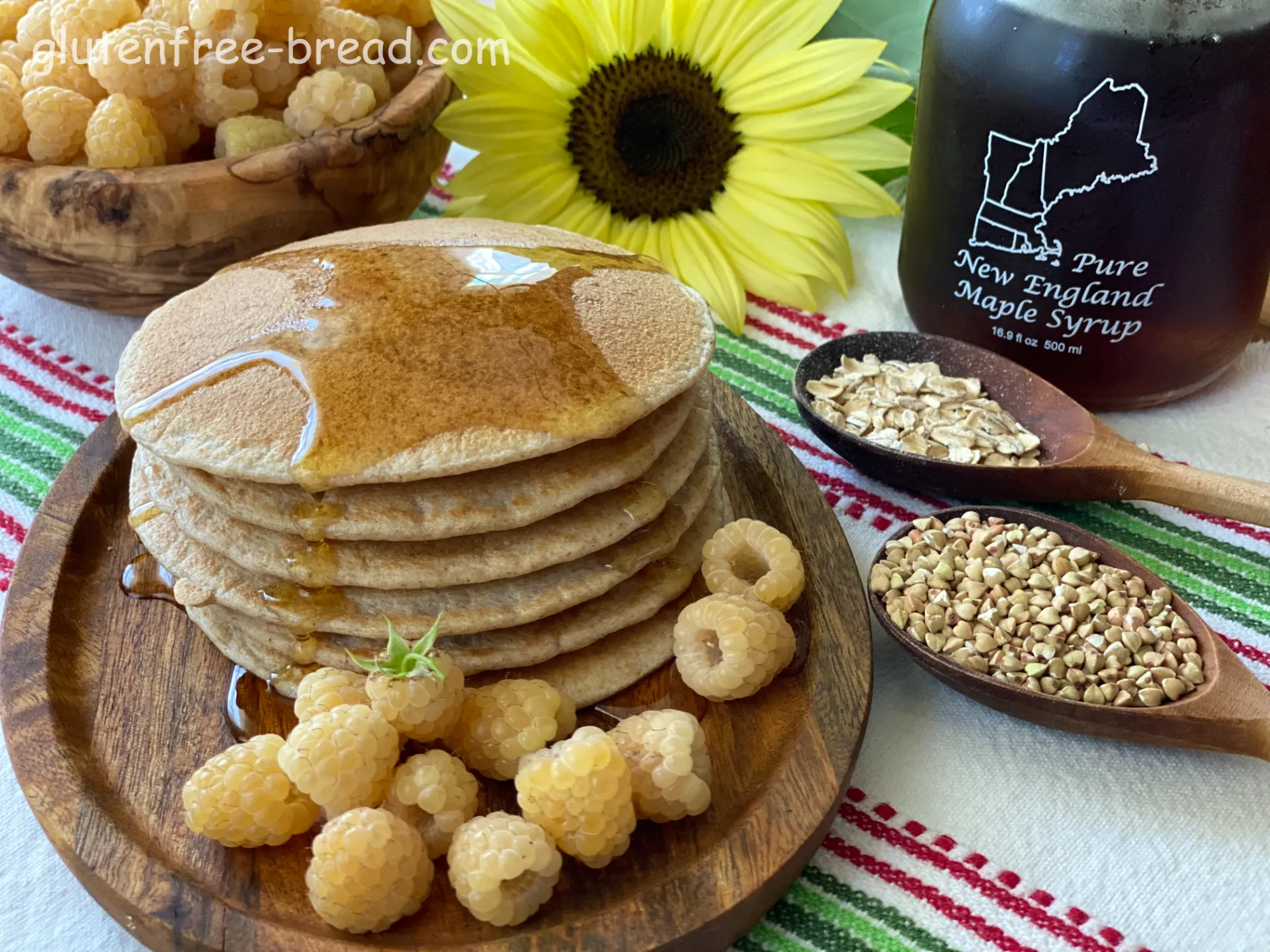
Ingredients:
| Name | Metric | US | TIP | |
|---|---|---|---|---|
| Hulled Buckwheat Groats, soaked overnight | 160 gr | 1 cup | ||
| Rolled Oats | 100 gr | 1 cup | ||
| Milk | 330 ml | 1 1/2 cups | ||
| Egg | 1 | 1 | ||
| Baking Powder | 6 gr | 1 teaspoon | ||
| Salt | 3 gr | 1/2 teaspoon |
Optional Ingredients :
| 6 gr / 1 tsp Cinnamon | |
| 3 gr / 1/2 tsp Vanilla |
Equipment:
| Blender |
Steps:
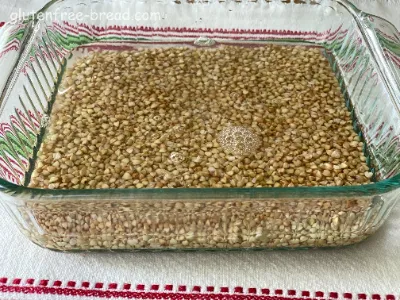
Step 1
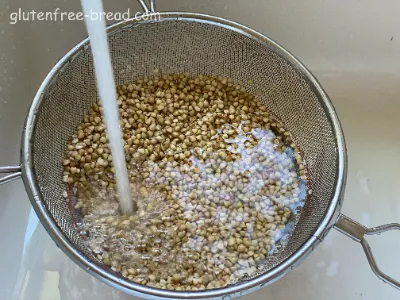
Step 2
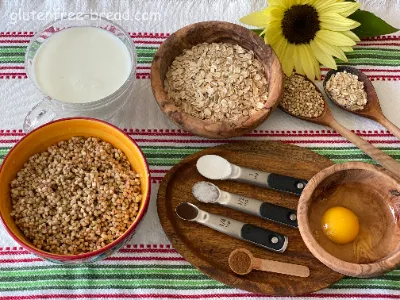
Step 3

Step 4
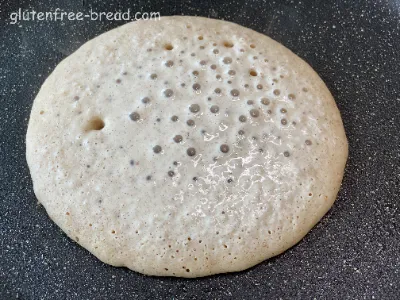
Step 5
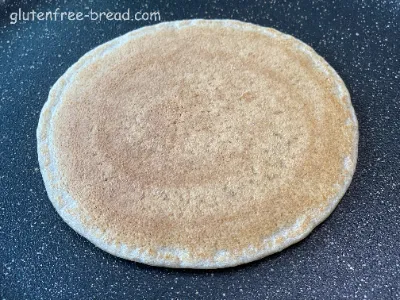
Step 6

Step 7
Notes:
Buckwheat Oats Pancakes
Measure and Rinse: Measure the desired amount of buckwheat groats. Rinse them thoroughly under cold water to remove any debris or dust.
Soaking: Place the rinsed buckwheat groats in a bowl and cover them with enough water. Optionally, add a splash of apple cider vinegar or lemon juice to aid in digestion and reduce phytic acid content.
Cover and Rest: Cover the bowl with a clean cloth or plastic wrap and let them soak at room temperature for at least 6-8 hours or overnight. This soaking period softens the groats, making them easier to blend into a smooth batter.
Benefits of Soaking:
Improved Digestibility: Soaking helps break down phytic acid and enzyme inhibitors present in buckwheat groats, enhancing their digestibility and nutrient absorption.
Texture Enhancement: Soaked groats blend more easily into a smoother batter, resulting in pancakes with a more uniform texture.
Nutritional Benefits: Soaking can unlock more of the nutrients in buckwheat groats, making them more bioavailable for your body to absorb.
Tips for Using Soaked Buckwheat Groats in Pancakes:
After soaking, drain and rinse the groats thoroughly before blending or mixing them into the pancake batter.
Adjust the amount of liquid in the pancake batter as needed, as soaked groats may retain some moisture.
Follow your preferred pancake recipe, incorporating the soaked buckwheat groats along with other ingredients like eggs, milk, oil, and baking powder.
By soaking buckwheat groats before making pancakes, you can enhance their nutritional benefits, improve texture, and create delicious, wholesome pancakes. Enjoy your breakfast!
Buckwheat Oats Pancakes additional information:
The nutritional benefits of Buckwheat and Rolled Oats grains:
Buckwheat:
Buckwheat is a highly nutritious pseudo-cereal, meaning it is consumed in the same way as cereals but comes from a different botanical family. Here are its key nutritional benefits:
Protein: Buckwheat is relatively high in protein compared to other grains, making it a valuable source for vegetarians and vegans.
Fiber: It contains a good amount of dietary fiber, which promotes digestive health and helps maintain regular bowel movements.
Minerals: Buckwheat is rich in minerals such as manganese, magnesium, copper, and phosphorus, which are essential for various bodily functions including bone health and energy metabolism.
Antioxidants: It contains antioxidants like rutin and quercetin, which have anti-inflammatory and heart-protective properties.
Rolled Oats:
Rolled oats are a type of oat that has been steamed and flattened, and they offer several nutritional benefits as well:
Soluble Fiber: Oats are particularly high in soluble fiber, especially a type called beta-glucan, which helps reduce cholesterol levels and promotes heart health.
Protein: They contain more protein and fat than most other grains, making them a more satisfying breakfast option.
Vitamins and Minerals: Rolled oats are a good source of several vitamins and minerals, including manganese, phosphorus, magnesium, copper, iron, zinc, folate, and vitamins B1 and B5.
Antioxidants: Oats also contain antioxidants, particularly avenanthramides, which have anti-inflammatory and antioxidant effects.
Combined Nutritional Benefits:
By combining buckwheat and rolled oats in recipes like pancakes, you get a balanced mix of nutrients:
Protein: Both grains contribute to the overall protein content of the pancakes, which is beneficial for muscle repair and growth.
Fiber: The combination of soluble and insoluble fiber from both grains supports digestive health, helps control blood sugar levels, and promotes a feeling of fullness.
Minerals: Together, they provide a range of important minerals necessary for various bodily functions.
Antioxidants: The antioxidants in buckwheat and oats help reduce oxidative stress and inflammation in the body, supporting overall health and well-being.
Conclusion:
Including buckwheat and rolled oats in your diet through recipes like pancakes not only adds delicious flavor and texture but also provides a wealth of nutritional benefits. They are excellent choices for those looking to increase their intake of fiber, protein, vitamins, minerals, and antioxidants, promoting overall health and vitality.
Pancake recipes often use both baking powder and baking soda together for several reasons related to achieving the desired texture, rise, and flavor of the pancakes:
Rising Power: Baking powder and baking soda are both leavening agents that help pancakes rise and become fluffy. Baking powder is a combination of an acid (usually cream of tartar) and a base (usually baking soda). When combined with liquid and exposed to heat, baking powder releases carbon dioxide gas bubbles, which cause the batter to rise. Baking soda, on the other hand, is pure sodium bicarbonate and requires an acidic ingredient (like yogurt, buttermilk, vinegar, or lemon juice) to activate it. Together, they provide a more powerful leavening action than using either one alone.
Balancing pH: Baking soda helps neutralize acidic ingredients in the batter, which can improve the overall texture and taste of the pancakes. It also contributes to a more golden brown color by reacting with natural sugars in the batter.
Flavor Enhancement: Baking soda can enhance the flavor of pancakes by reducing the acidity of certain ingredients, creating a more balanced and pleasant taste.
Texture Control: Using both leavening agents allows for better control over the texture of the pancakes. Baking powder alone might not provide enough lift for thicker batters or heavier ingredients like buckwheat or oats. Baking soda helps ensure the pancakes are light and airy.
Reaction Time: Baking powder reacts immediately when mixed with liquid and then again when exposed to heat. Baking soda starts to react as soon as it is mixed with an acidic ingredient. The combination of both ensures a consistent rise and texture throughout the cooking process.
Overall, using both baking powder and baking soda together in pancake recipes helps ensure that the pancakes rise properly, have a light and fluffy texture, and achieve a desirable flavor profile. Each ingredient plays a crucial role in creating delicious pancakes that are enjoyed by many.
Pancake recipes often use both baking powder and baking soda together for several reasons related to achieving the desired texture, rise, and flavor of the pancakes:
Rising Power: Baking powder and baking soda are both leavening agents that help pancakes rise and become fluffy. Baking powder is a combination of an acid (usually cream of tartar) and a base (usually baking soda). When combined with liquid and exposed to heat, baking powder releases carbon dioxide gas bubbles, which cause the batter to rise. Baking soda, on the other hand, is pure sodium bicarbonate and requires an acidic ingredient (like yogurt, buttermilk, vinegar, or lemon juice) to activate it. Together, they provide a more powerful leavening action than using either one alone.
Balancing pH: Baking soda helps neutralize acidic ingredients in the batter, which can improve the overall texture and taste of the pancakes. It also contributes to a more golden brown color by reacting with natural sugars in the batter.
Flavor Enhancement: Baking soda can enhance the flavor of pancakes by reducing the acidity of certain ingredients, creating a more balanced and pleasant taste.
Texture Control: Using both leavening agents allows for better control over the texture of the pancakes. Baking powder alone might not provide enough lift for thicker batters or heavier ingredients like buckwheat or oats. Baking soda helps ensure the pancakes are light and airy.
Reaction Time: Baking powder reacts immediately when mixed with liquid and then again when exposed to heat. Baking soda starts to react as soon as it is mixed with an acidic ingredient. The combination of both ensures a consistent rise and texture throughout the cooking process.
Overall, using both baking powder and baking soda together in pancake recipes helps ensure that the pancakes rise properly, have a light and fluffy texture, and achieve a desirable flavor profile. Each ingredient plays a crucial role in creating delicious pancakes that are enjoyed by many.
If you decide to omit baking soda and use only baking powder in a pancake recipe, the outcome can still be acceptable, but there may be some noticeable differences in texture and flavor:
Rising Power: Baking powder alone provides a sufficient amount of leavening for most pancake recipes. It contains both an acid and a base, which react to release carbon dioxide bubbles when mixed with liquid and heated. This reaction causes the pancakes to rise and become fluffy.
Texture: The texture of pancakes made with only baking powder may be slightly denser compared to those made with both baking powder and baking soda. Baking soda reacts more quickly and aggressively with acidic ingredients, providing an initial lift that can contribute to a lighter texture.
Flavor: Baking soda has a slight alkaline taste, which can neutralize the acidity in the batter and enhance the overall flavor of pancakes. Without it, pancakes might have a slightly different taste profile, but this difference is usually subtle.
Acidic Ingredients: If your recipe includes acidic ingredients like buttermilk or yogurt, they may not be fully neutralized without baking soda. This could affect the chemical reaction and overall rise of the pancakes.
Tips for Adjusting:
Increase Baking Powder: If you decide to omit baking soda, you can slightly increase the amount of baking powder to compensate. Typically, you can increase by 25-50% of the original amount. For example, if the recipe calls for 1 teaspoon of baking soda and 1 teaspoon of baking powder, you might increase the baking powder to 1.5 teaspoons.
Expect Differences: Be aware that the pancakes may turn out slightly denser and have a slightly different flavor profile compared to the original recipe that includes both leavening agents.
In conclusion, while omitting baking soda and using only baking powder is possible and can still result in decent pancakes, it's important to understand the potential differences and adjust your expectations accordingly. Experimenting with small adjustments can help you achieve the desired texture and flavor based on your preferences.







